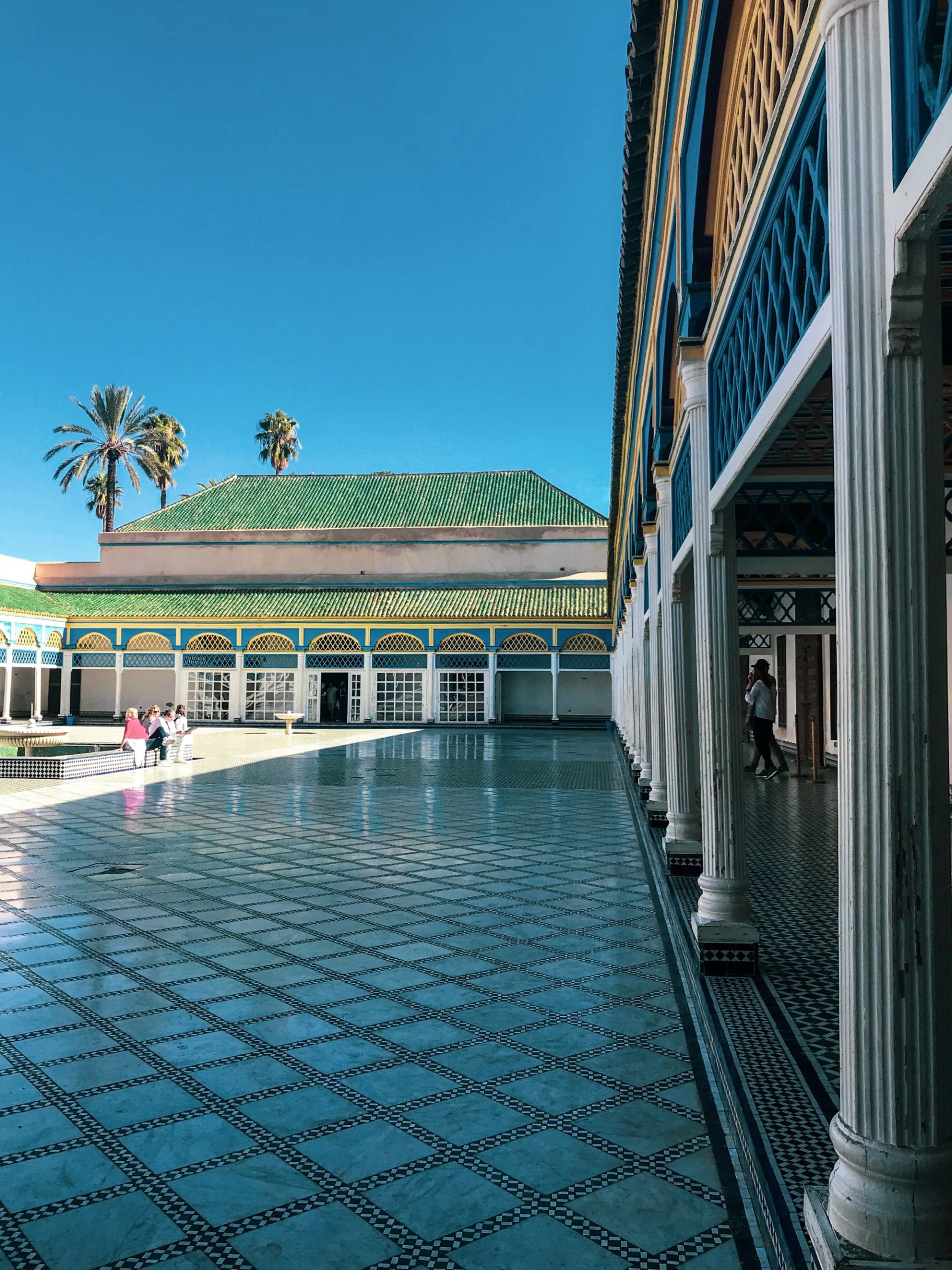Bahia Palace: Unveiling the Architectural Splendor of Marrakech’s Historical Gem
Nestled within the vibrant city of Marrakesh, Morocco, Bahia Palace stands as a timeless masterpiece, reflecting the rich history and exquisite craftsmanship of Moroccan architecture. In this article, we will delve into the enchanting allure of Bahia Palace, exploring its intricate details, cultural significance, and the captivating experience it offers to visitors from around the world.
A Glimpse into Moroccan Architectural Marvels of Bahia Palace
Marrakesh’s Architectural Heritage of Bahia Palace
Marrakesh, known as the “Red City,” is renowned for its architectural wonders. Bahia Palace stands as a testament to the city’s rich heritage, showcasing a blend of Moroccan and Islamic design elements that captivate the imagination.
Bahia Palace: A Palace Fit for Royalty
Bahia Palace was originally constructed in the late 19th century as a residence for Grand Vizier Si Moussa, showcasing the opulence and grandeur befitting a palace of its stature. The name “Bahia” translates to “brilliance” or “beautiful,” perfectly capturing the essence of this architectural gem.
The Exquisite Architectural Details of Bahia Palace
Intricate Moroccan Zellige Tiles
Step into this Palace and marvel at the intricate zellige tiles adorning the walls, ceilings, and courtyards. These geometric mosaic patterns, meticulously crafted by skilled artisans, showcase the mastery of Moroccan craftsmanship.
Elegant Courtyards and Gardens
The Palace boasts beautiful courtyards adorned with lush gardens and tranquil fountains, creating a serene ambiance that transports visitors to a world of beauty and tranquility. The interplay of light and shadow further enhances the enchanting atmosphere.
Cultural Significance and Historical Significance
Bahia Palace: Residence of the Grand Vizier
Bahia Palace served as the residence of Grand Vizier Si Moussa and later his son, Ahmed ben Moussa. It became a hub of political and social activities, hosting dignitaries, diplomats, and high-ranking officials, showcasing the palace’s importance in Moroccan history.
A Symbol of Moroccan Heritage
The Palace stands as a symbol of Moroccan heritage and architectural excellence. It offers insights into the lives of the elite and the opulent lifestyle during the 19th century, as well as the cultural and artistic influences that shaped Moroccan design.
Exploring the Palace’s Splendors
The Grand Court and Riad
The grand court of Bahia Palace welcomes visitors with its spaciousness and ornate details. The riad, a traditional Moroccan courtyard, serves as the heart of the palace, offering a tranquil oasis adorned with beautiful tiles and lush greenery.
Majestic Halls and Salons
As you wander through thisPalace, you will discover majestic halls and salons, each exuding its unique charm. Intricately carved wooden ceilings, stucco decorations, and colorful stained glass windows add to the palace’s allure.
Preserving the Heritage
Historical Restoration Efforts
Over the years, Bahia Palace has undergone restoration efforts to preserve its architectural splendor and historical significance. These endeavors ensure that future generations can continue to appreciate the palace’s beauty and learn from its rich heritage.
An Immersive Cultural Experience
Today, Bahia Palace welcomes visitors from all corners of the world, offering a glimpse into Morocco’s glorious past. Exploring its ornate chambers, tranquil gardens, and captivating courtyards provides an immersive cultural experience that transports visitors to a bygone era.
The Palace stands as a testament to the architectural brilliance and cultural heritage of Marrakech. From its intricate zellige tiles to its elegant courtyards, the palace enchants visitors with its timeless beauty. A visit to Bahia Palace is an invitation to step back in time, immerse oneself in Moroccan history, and marvel at the craftsmanship of a bygone era.









Leave A Comment